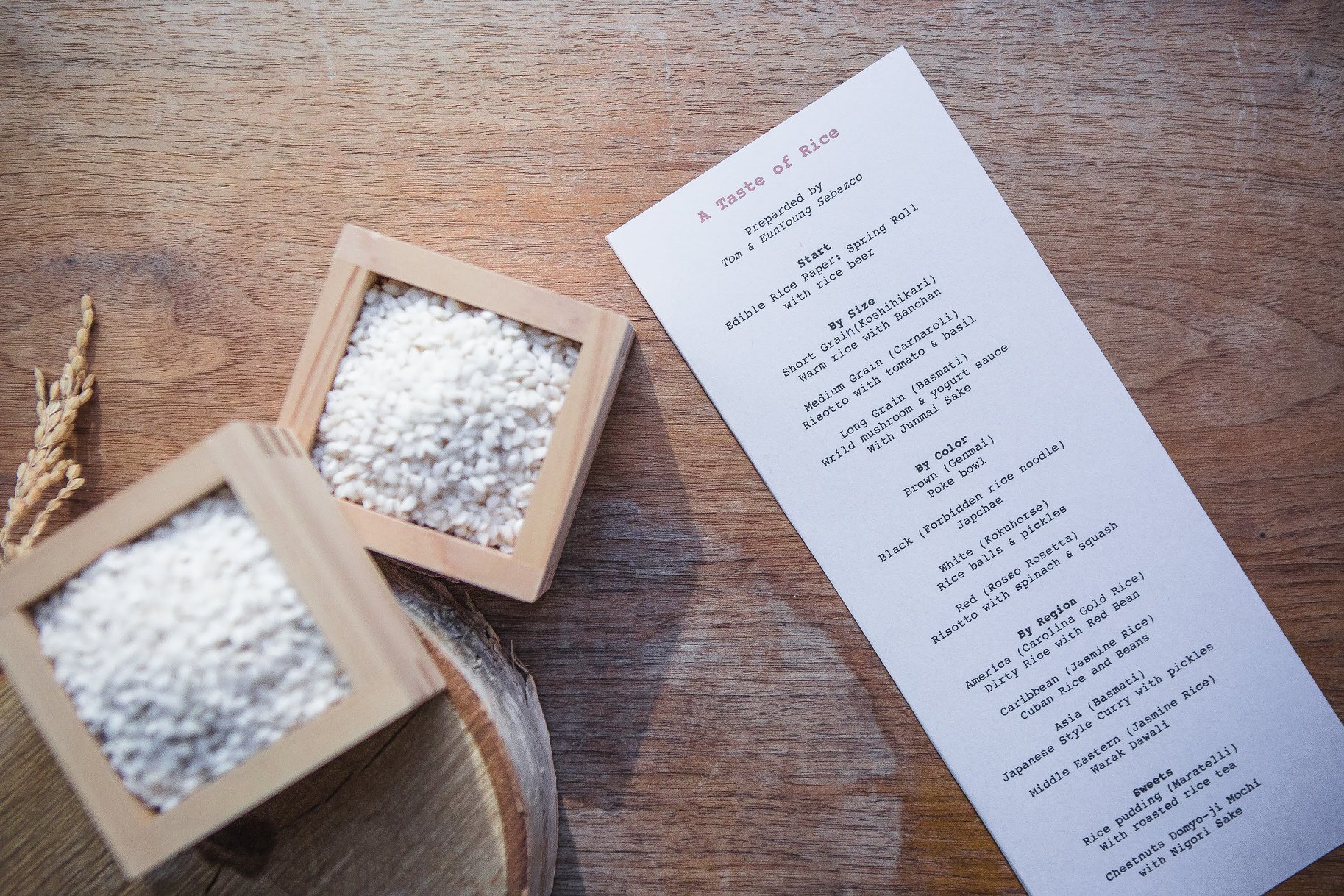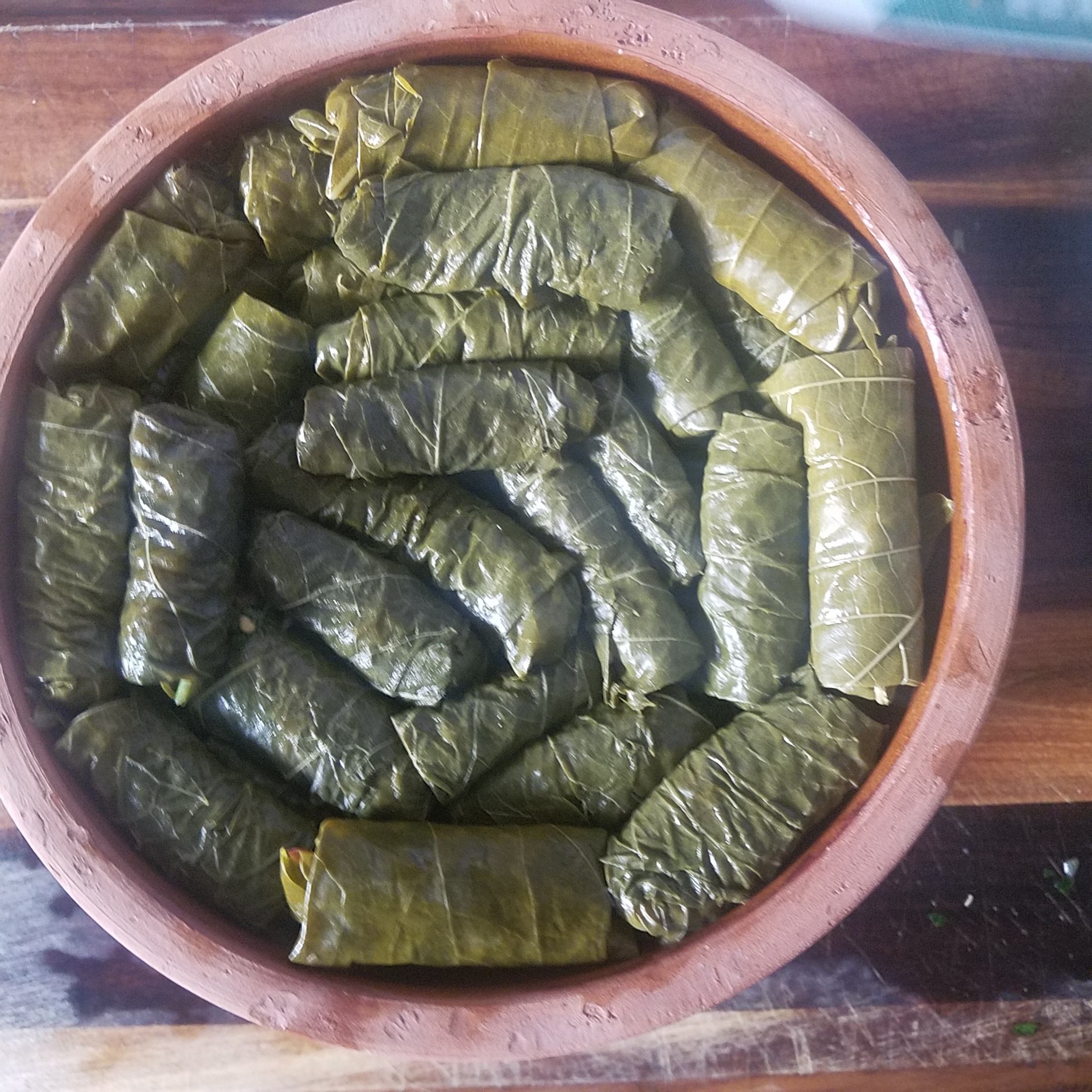Grain Spirit
/WhaYoung Ji J Farm Consulting CEO
photo: WhaYoung Ji
"The Grain has a Soul" (Gokryeong 穀 靈: grain spirit) Gokryeing is an ancient superstition in Korea and parts of Asia that emphasizes the importance of rice seeds. It is a strong belief that the rice grain is an important food and its traditions are deeply rooted in society and life. Generations of rice farmers believe the rice grain carries a spirit or soul, which brings forth rebirth and reproduction.
In Korea, the SungJu (城主) Danji (pot) and Allge Shimni (rope) are sacred and are kept in homes to protect the house and family. The SungJu Danji goes with the family even as they move. Allge Shimni are healthy rice stocks that are bundled and used in a traditional ceremony to ensure a good growing season. These rice bundles are not eaten but made into ceremonial cakes or used for seed. Depending upon the different local communities, their pots are either filled with barley for the summer or rice for the fall. Filling the pot with newly harvested rice represents a great harvest season.
People of Thailand believe rice has gokmo (穀 母), or soul, a nestled rice consciousness corresponding to the developmental phase of the rice grain. The Malaysians keep rice straws in the barn to pay respects for the soul. During the rice heading, or period before grain emerges, season in Indonesia, guns are banned out of fear of disturbing the spirit from loud noises.
Unfortunately, these beautiful traditional customs are fading due to the decline of small farms and the rise of mass production and agriculture technology. These days, the customs can be found in museums or at local annual festivals hoping to preserve traditional customs and to thank the farmers for a plentiful yield.
“곡물에는 영혼이 있다” (곡령 穀靈 grain spirit)
다소 생소한 용어지만 ‘곡령’은 곡물에는 영혼이 있다고 믿는 일종의 애니미즘이다. 식물 가운데서도 곡류는 인간의 주식(主食)이고, 그 생산은 인간의 생업과 직결되어 있으므로, 곡령에 대한 신앙은 특히 원시 농경사회에서 성하였는데, 그러한 민속은 문명사회에도 남아 있다.
미개와 문명을 불문하고 곡물 재배를 생업으로 하는 모든 민족에게 널리 분포하며 그 전형적인 것은 벼농사를 하는 지대에서 볼 수 있고 대개는 벼의 정령과 영혼이 사람과 마찬가지로 탄생과 성장 그리고 성숙과 고사 또는 재생의 과정을 되풀이 한 다는 관념에 바탕을 두고 있습니다.
타이에서는 벼에는 곡모(穀母) 깃들어 있다고 믿고 벼는 발육단계에 대응하는 의식을 매우 중요시하며 말레이시아에서는 벼에는 넋이 깃들어 있다고 믿고 곳간에 저장된 볍씨에 주의를 기울인다. 또 인도네시아에서도 벼의 출수기에는 큰소리를 내거나 총 을 쏘는 것을 금기로 삼아 왔는데 그 이유는 벼의 넋을 놀라게 하면 성장을 해칠 것 으로 믿었기 때문이라고 할 수 있다.
곡령의 형성은 농업의 시작과 밀접한 관련이 있었던 것으로 보이고, 종자의 중요성 이 부각된 시점과 밀접한 관련이 있다. 한국의 경우에는 부족국가의 형성된 시점으로 추정해 볼 수 있다. 한국에서의 곡령에 관한 의식 가운데 대표적인 것으로는 ‘성주단 지’와 ‘올게심니’를 들 수 있으며 오늘날에도 일부 민가에서 볼 수 있다.
성주(城主)는 집을 지키고 보호하는 신령으로 집을 새로 짓거나 옮길 때에는 반드시 이 신을 모셨다. 지방에 따라서 다소 차이는 있으나 성 주의 신체로 여기고 집안에 모셔두는 단지(항아 리, 독)를 ‘성주단지’라 하였고 여름에 보리쌀 을, 가을에 쌀을 채워 둔다. 새로 거둔 햅쌀을 성주단지에 채워 넣으며 풍작을 감사하는 제를 지내기도 한다. 한편 ‘올게심니(올벼심이)’는 한가위를 전후해 그해 농사에서 거둬들인 벼나 수수, 조 같은 햇곡식의 이삭 가운데 튼실한 놈을 골라 벽에 걸어놓는 풍습이다. 올게심니 한 곡식은 어떤 일이 있어도 먹지 않고, 이듬해 씨앗으로 쓰거나 떡을 빚어 조상님 사당 에 올리곤 했었다. 이는 수확에 대한 감사이며 다음해의 풍년을 기원하는 의례이다.
안타깝게도 현대사회에서는 이러한 풍습이 점차 사라지고 있다. 이제는 박물관의 전 시실에 혀 버렸고 어쩌다 지역축제나 이벤트의 볼거리(눈요기) 정도에 불과하다. 영 농기술의 발전이 가져온 대량 생산과 더불어 고리타분한 미신이라고 경원시하는 풍조 는 쌀에 대한 고마움을 잊게 하고 말았다.












